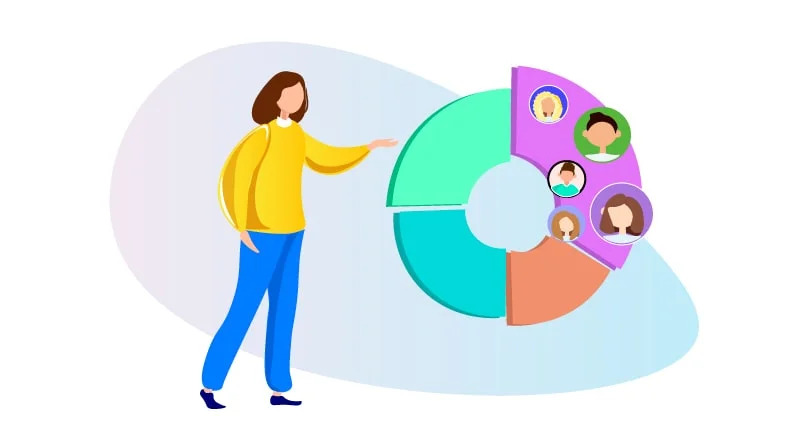
Why does a business need to know its customers by sight?
An entrepreneurial spirit, the ability to make money, and a willingness to take risks are indisputable reasons to start your own business. But to keep it running and generating stable profits, you need to take it seriously. For example, to simplify the search for potential customers, you will need a high-quality portrait of the target audience.
What is a portrait of the target audience?
If you clearly understand who you are creating products or services for, you are already halfway to understanding the portrait of your target audience. After all, this is a detailed list of characteristics and preferences of potential customers who need the products your company produces. It’s important to understand what motivates a person to buy and what problem they hope to solve by purchasing a particular product. The generalized image of a customer includes a number of features, such as:
- age;
- gender;
- nationality;
- religious beliefs;
- place of residence;
- living conditions;
- marital status and number of children;
- employment sector;
- position;
- salary level;
- needs;
- desire;
- values;
- habits;
- Fears.
For example, knowing where consumers live, you can focus on selling seasonal products: snowboards and ski equipment in winter, swimwear and bicycles in summer. And taking into account the income level will help you understand whether people can afford your products. The average Ukrainian pensioner is unlikely to be interested in buying an expensive smartphone. And it is better to offer to buy an apartment in a new building to a young couple living with their parents.
How will a customer portrait help promote your business?
Without understanding the needs and pains of your consumer, it is impossible to create a product that will win their favor and trust. People are more likely to accept information that resonates with their interests and needs. Therefore, knowing your target audience helps entrepreneurs solve a number of important tasks:
- Search for, attract, and retain customers.
- Personalize commercial offers.
- Adapt the assortment to create a product that will fully satisfy consumers.
- Create targeted ads.
- Launch effective promotion channels.
- Improve the loyalty program.
- Save money on advertising.
- Determine the methods of communication that will retain the client.
- Develop a unified marketing strategy for the development of your own business.
- Sell faster and more.
- Improve business reputation.
Targeting specific customers helps to allocate resources and efforts more efficiently, resulting in increased profitability. Knowing your main audience, you can change the color, taste, smell, and materials of the product to make it seem as useful and attractive as possible. The company also gets the opportunity to adapt its advertising campaign and strategy in such a way as to attract the target group as much as possible. This forward-thinking approach leads to an increase in sales and net profit.

